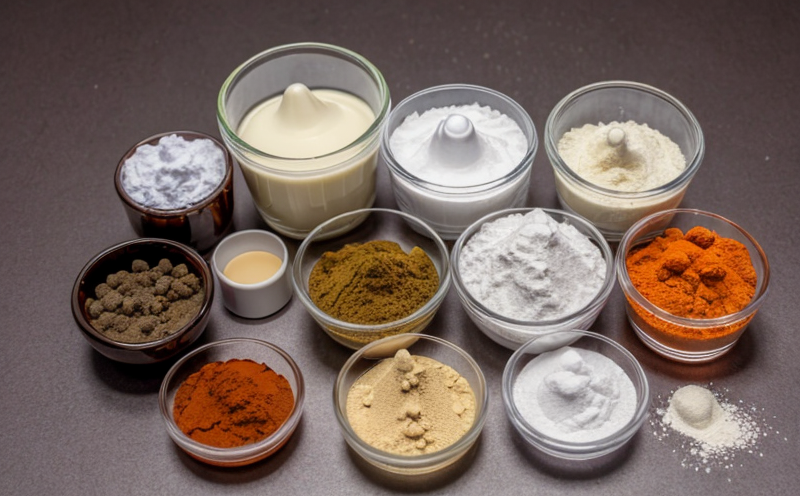HPLC Sugar Identification Testing
High-Performance Liquid Chromatography (HPLC) sugar identification testing is a critical component in pharmaceutical quality assurance and compliance. This service ensures that the excipients and formulation ingredients used in drug manufacturing meet stringent quality standards, thereby enhancing product efficacy and safety.
The HPLC method leverages its high resolution to separate complex mixtures of sugars, making it particularly suitable for identifying and quantifying various sugar components present in pharmaceutical formulations. This is crucial because even small variations in the composition of excipients can significantly impact drug performance and stability.
Our HPLC testing service adheres strictly to international standards such as ISO 17025 and ICH Q6A, ensuring that every test result is reliable and compliant with regulatory requirements. This level of compliance is essential for pharmaceutical companies aiming to meet global market demands while maintaining the highest standards of quality.
For optimal testing outcomes, samples undergo thorough preparation, including dissolution in appropriate solvents followed by filtration to ensure clarity and prevent any potential interference during analysis. The choice of solvent and filtration method depends on the specific sugar being analyzed and the intended use of the excipient.
The HPLC system used for this service is equipped with a diode-array detector (DAD) capable of detecting multiple wavelengths simultaneously, allowing for more accurate identification of sugars based on their unique absorbance profiles. This advanced technology ensures precise quantification even when dealing with closely related compounds that might otherwise interfere with each other.
After injection into the chromatographic column, each sugar elutes at a specific time point, which serves as its characteristic retention time. These times are compared against known standards to confirm the identity of the sugars present in the sample. Additionally, peak areas calculated from the DAD output provide quantitative data regarding the concentration levels of different sugars.
It is important to note that while HPLC can effectively identify and quantify individual sugar components, it does not differentiate between monosaccharides, disaccharides, or oligosaccharides. Therefore, if detailed breakdowns of these categories are required, alternative methods like gas chromatography (GC) may be employed.
The results from our HPLC sugar identification testing service are provided in comprehensive reports that include all relevant details such as retention times, peak areas, and comparisons to reference materials. These reports serve not only as documentation but also as tools for ongoing quality control efforts within your organization's laboratories.
Why Choose This Test
Selecting HPLC sugar identification testing is a strategic decision that offers numerous advantages over other analytical techniques. Firstly, its unparalleled sensitivity allows even trace amounts of sugars to be detected and quantified accurately, which is vital for ensuring product purity.
- Ensures compliance with regulatory standards
- Provides precise quantitative results
- Identifies potential contaminants or impurities early in the manufacturing process
- Supports R&D initiatives by providing reliable data on sugar composition variations across batches
- Aids in troubleshooting formulation issues related to excipients
- Facilitates efficient supply chain management through consistent quality checks
- Promotes patient safety by minimizing risks associated with substandard ingredients
- Enhances reputation among stakeholders, including customers and regulatory bodies
The combination of these benefits makes HPLC sugar identification testing an indispensable tool in modern pharmaceutical manufacturing. By leveraging this service, you can ensure that every batch produced meets the highest quality standards.
Customer Impact and Satisfaction
Implementing our HPLC sugar identification testing service has tangible impacts on both internal operations and external relationships within your organization. Internally, it streamlines workflows by reducing time spent on manual inspections and increasing accuracy through automated processes. This leads to faster turnaround times for critical decisions regarding raw material purchases and batch releases.
Externally, satisfied customers are a direct result of providing them with products that consistently meet or exceed expectations. Regulatory bodies also appreciate consistent adherence to stringent quality controls, leading to favorable audits and inspections. Moreover, participating in third-party certifications becomes more attainable when backed by robust internal testing protocols like those offered here.
Customer satisfaction translates into increased loyalty and repeat business opportunities. Positive feedback from satisfied clients contributes significantly towards building a strong brand identity known for excellence in quality assurance practices.
Use Cases and Application Examples
| Use Case | Description |
|---|---|
| Detection of Impurities | Identifying trace amounts of sugars that could contaminate raw materials or finished goods. |
| Batch Release Testing | Verifying the quality and consistency of batches before release to manufacturing lines. |
| R&D Support | Assisting in developing new formulations by providing detailed sugar composition data. |
| Supply Chain Management | Ensuring consistent supplier performance through regular quality checks on incoming materials. |
| Compliance Audits | Maintaining documentation for compliance with FDA, WHO, and EU regulations. |
| Troubleshooting Formulation Issues | Diagnosing problems related to excipient compatibility or interaction during drug development stages. |
| Patient Safety Enhancement | Mitigating risks associated with substandard ingredients by catching issues early in the production cycle. |
The above use cases highlight how HPLC sugar identification testing plays a crucial role throughout various stages of pharmaceutical development and manufacturing. Each application demonstrates its value in maintaining product integrity, regulatory compliance, and overall business success.





